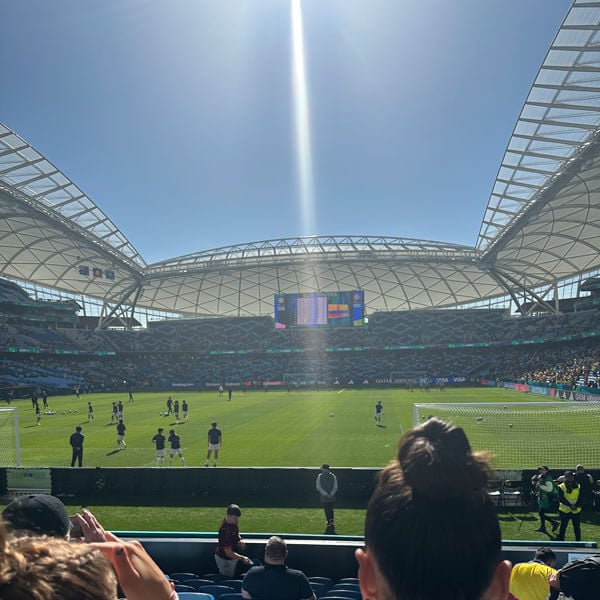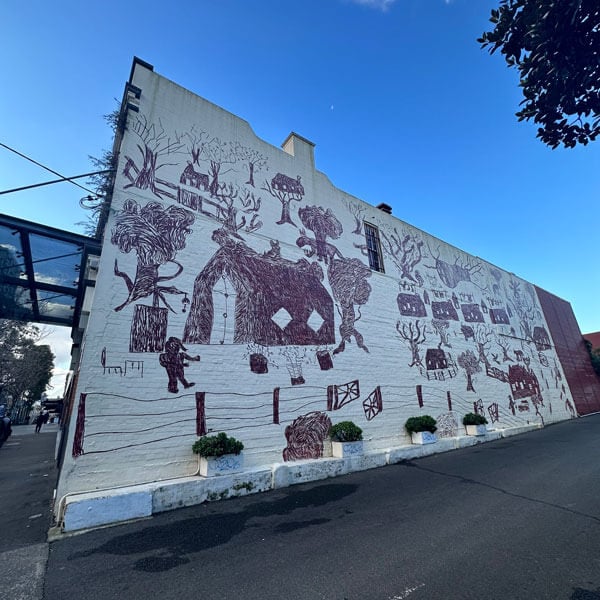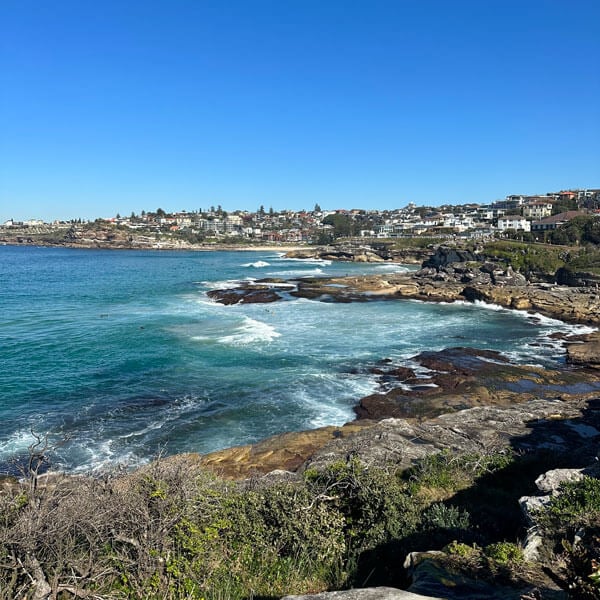
Getting up close with the World Cup from down under
November 10, 2023

November 10, 2023

I flew across the world packed for what could be described as an eye-opening and just maybe even life-changing adventure. I joined 15 other students and my professors on a trip that allowed us to learn more about the political and cultural environment of Sydney, Australia, while also being a viewer to a large and worldwide sporting event, the FIFA Women’s World Cup.
In order to get there though, we spent the spring semester studying Australia and its history while also taking time to look at the teams we would see compete during our time in Sydney. From there, we all booked flights from our area to Sydney. For me, it was two flights with a layover in Los Angeles that totaled almost a day’s worth of travel, not to mention, the multiple time changes we flew through.
We arrived bright and early at 6:30 a.m. Australia time and joined Professor Hillary Haldane in the airport where we received our Opal cards, which gave us access to all the public transportation options Sydney had to offer. The Opal cards would be available to us when we wanted to use the light rail, bus and ferry services, even though we opted to walk as much as possible.
As five of us were on the same flight, we stuck together throughout the day and headed to meet with Professor Molly Yanity and Erin Sabato, senior director of global learning at QU, to get situated in the hostel where we would be staying for the next 10 days. Even though our rooms were not ready at the time, we made the best of the situation by going for breakfast at the cafe attached to the hostel that would become my go-to for coffee and breakfast. Since we had time before we could check into our rooms, we were free to explore Sydney and take in some historic sights.
Enter the Sydney Harbor Bridge and the Sydney Opera House — two sights I had only seen in photos and movies. Though it was rainy, they were still a sight to see. They overlooked the harbor that was bustling with activity, and for popular sights, they were not heavily crowded with tourists, so the group of us that went to explore were free to take photos and take in the sights without a lot of people around us. Day 1 gave us a chance to acclimate and explore the area around us before we got into the rest of the trip.

Day 2 was an early wake-up for group breakfast before we walked to our first match, Korea vs. Colombia. In my opinion, this match set the tone for the matches we would see. Not only were the fans respectful to one another, but they support and love the athletes on the field and were not only passionate about the sport, but for the country they were supporting. One of the most talked about highlights of the trip was the passion and emotion with which the Colombian national anthem was sung by the fans. During our time, we saw Colombia play twice and each time amazed us.
Our walks to and from Allianz Stadium at Moore Park would become routine, but during our first walk back we took a detour to tour some murals in the historic Redfern district with Professor Haldane. In what was a much quieter neighborhood, we took in murals that led to a much larger discussion within the country about honoring and representing the Aboriginal people that came before the settlers.

Day 3 continued our education about the Aboriginal people as we went on a Dreaming Tour led by a person with Aboriginal ancestry and saw sights around Sydney that had a much deeper meaning than what was on the surface. We learned about the connection the Aboriginal people shared with the land and the country and how some of the sights we had seen and toured had a much different history.
Some more of this history and the history of Sydney would be uncovered when we went to the Hyde Park Barracks on Day 5. The Hyde Park Barracks experience was a self-guided audio and visual tour that told a story about the colonizing and settling of Sydney and was also acknowledging and recognizing the people that lived there before.
While in Sydney, we also took time as a class to meet with journalist Suzy Wrack from The Guardian and had dinner with Alex Greenwich of the New South Wales Legislative Assembly. Each talked to us about their roles and what being and living in Australia meant to them. Wrack spoke to us about the sports environment and her coverage of the English women’s soccer team, while Greenwich spoke to us about his campaign and legislative role. Both allowed us to further learn what he had discussed in class back in the spring.

Probably one of my favorite activities was the Bondi to Coogee Coastal Walk on Day 7 which was just over 3.5 miles and allowed us to see the beauty of the country and enjoy some time swimming in the Pacific Ocean. This combined with our tour of Fox Studios and photo opportunities with Carli Lloyd and Rob Stone had everyone in the group appreciating what Australia had to offer and the connections we were able to make out there.
It is hard to summarize a 10-day trip into 1000 words. This trip was filled with so many exciting and happy memories, which include the four soccer matches (Korea vs. Colombia, England vs. Denmark, Germany vs. Colombia, and France vs. Panama) we saw in person as well as the soccer watch parties we attended in Tumbalong Park. We all also got to explore the Taronga Zoo where I did get to see a kangaroo and checked “see a kangaroo” off the bucket list. This trip was a whole new experience for me with being outside the country and facing my fear of flying. I was able to do it alongside my peers and professors where we all shared lasting memories and saw a new side of the world, literally.
Quinnipiac Today is your source for what's happening throughout #BobcatNation. Sign up for our weekly email newsletter to be among the first to know about news, events and members of our Bobcat family who are making a positive difference in our world.
Sign Up Now